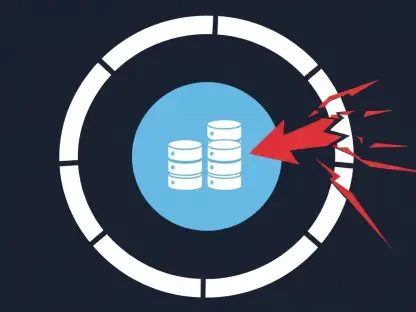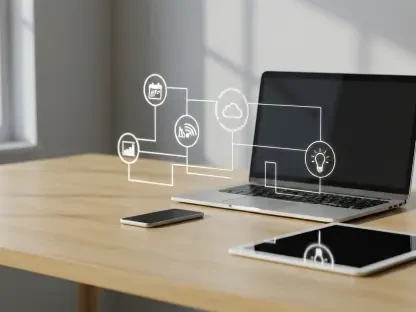In today’s fast-paced digital landscape, delivering software quickly is crucial. However, this speed can sometimes come at the expense of security. Balancing rapid development cycles with robust security measures is a challenge that many organizations face. This article will delve into strategies for integrating security seamlessly into the software development lifecycle without slowing down productivity.
Software development teams are under constant pressure to deliver features quickly. Yet, the complexity of modern applications and the ever-evolving threat landscape necessitates a robust approach to security. Ignoring security can lead to vulnerabilities that can be costly to fix post-release and can damage an organization’s reputation. Therefore, integrating security into the development process from the outset is imperative.
Integration of Security Practices
Embedding Security in the Development Workflow
Embedding security directly into the development workflow is one of the fundamental strategies ensuring robust protection throughout the software lifecycle. This involves introducing security measures at every stage of the software development lifecycle. By incorporating security checks early on, issues can be identified and addressed before they escalate into critical vulnerabilities. Tools like Static Application Security Testing (SAST) and Dynamic Application Security Testing (DAST) can be integrated into the development environment, providing continuous feedback to developers.
Moreover, adopting a DevSecOps approach ensures that security is a shared responsibility across development, security, and operations teams. This collaboration promotes a culture where security is considered throughout the development process, rather than as an afterthought. In DevSecOps, security is initially built into every process and automated as much as possible, creating a seamless and less intrusive experience for developers. This proactive embedding of security minimizes disruptions and allows teams to maintain their velocity without sacrificing secure code quality.
Automation of Security Processes
Automation plays a pivotal role in balancing speed and security. Automated security tools can perform routine checks and flag potential issues, thus reducing the manual effort required. Integrating automated scanning tools into Continuous Integration and Continuous Deployment (CI/CD) pipelines can help in catching vulnerabilities early. This not only saves time but also ensures that security checks are consistent and thorough. Automation is particularly effective in maintaining high-quality standards in fast-paced environments where manual security reviews may miss critical issues due to time constraints.
Automated security checks can be configured to run during various stages, such as code commits, builds, and pre-deployment. These checks provide developers with instant feedback on any vulnerabilities, allowing them to address issues promptly without disrupting the development flow. Incorporating these automated processes helps in maintaining a robust security posture and frees up security professionals to focus on more complex, strategic aspects of security rather than routine checks. In effect, automation acts as a force multiplier, enabling organizations to scale their security efforts proportionally with their development speed.
Prioritizing Vulnerabilities
Focus on Critical Vulnerabilities
Not all vulnerabilities pose the same level of risk, and prioritizing vulnerabilities based on their potential impact is crucial for efficient security management. Utilizing the Common Vulnerability Scoring System (CVSS) helps in assessing the severity of vulnerabilities by providing a standardized method of ranking them. This prioritization allows teams to focus their efforts on the most significant issues first, mitigating the highest risks and ensuring a more secure application. By concentrating on the most critical vulnerabilities, teams can allocate resources more effectively and ensure that the most significant risks are mitigated first.
Incorporating threat intelligence feeds with security tools can further refine this prioritization process. These feeds provide real-time information about emerging threats, allowing teams to adjust their priorities based on the latest risk landscape. Threat intelligence feeds act as a valuable resource for aligning security efforts with the most current threats, significantly enhancing an organization’s defensive capabilities. With an informed and prioritized approach, developers can remediate critical vulnerabilities quickly without being sidetracked by less urgent issues, ensuring that the most pressing threats are addressed promptly.
Diverse Security Testing Methods
Employing a variety of security testing methods enhances the detection of vulnerabilities. SAST analyzes source code for vulnerabilities even before the code is compiled, providing a clear understanding of potential weaknesses. These tools are excellent for identifying issues early in the development cycle. Dynamic Application Security Testing (DAST) tests running applications by simulating attacks to find vulnerabilities that manifest only during runtime. It’s useful for uncovering issues that can’t be detected in the static code. By using both SAST and DAST in tandem, organizations can gain a comprehensive understanding of their security landscape.
Software Composition Analysis (SCA) identifies vulnerabilities in third-party components and open-source software that are increasingly used in modern applications. Container security ensures that the environment in which applications run is also secure, covering additional layers of potential vulnerabilities. By combining these methods, organizations can achieve comprehensive coverage and detect vulnerabilities that might otherwise be missed if relying on a single approach. This holistic method of diverse security testing provides multiple layers of protection, ensuring that various facets of security are addressed comprehensively, thereby fortifying the application’s overall security posture.
Automation and Real-Time Feedback
Automated Security Scanning
Integrating automated security scanning tools into CI/CD pipelines is a best practice for modern development teams. These tools quickly analyze code for vulnerabilities every time new code is committed or an application is built. This constant vigilance helps in maintaining a high standard of security without causing delays. Automated tools not only speed up the identification process but also offer scalability, allowing organizations to secure multiple applications and environments efficiently. This proactive scanning ensures that potential issues are identified and addressed well before they can pose serious threats.
Automated scanning tools can be configured to enforce security policies, ensuring that only code that meets security standards is allowed to progress through the pipeline. This enforcement creates a consistent security baseline across all projects, significantly lowering the chances of a critical vulnerability slipping through the cracks. With automated security scanning as an integrated part of the CI/CD pipeline, developers can count on an additional layer of defense, which acts as a fail-safe during rapid development cycles. This approach provides confidence that security checks are thorough and consistent across all stages of development.
Real-Time Feedback for Developers
Providing real-time feedback within the Integrated Development Environment (IDE) enables developers to identify and fix vulnerabilities as they write code. Tools that integrate with IDEs can highlight security issues and provide suggestions for remediation, making it easier for developers to adopt secure coding practices. This immediate feedback mechanism ensures that security errors are caught at the earliest possible stage, minimizing the time and effort required for later corrections. Real-time feedback not only enhances code quality but also educates developers on secure coding practices, fostering an environment of continuous learning and improvement.
This real-time feedback loop not only enhances the quality of the code but also educates developers on common security pitfalls, fostering a culture of continuous learning and improvement. By incorporating security guidelines directly within the development environment, developers become more aware of potential issues and are more likely to internalize best practices. This method transforms secure coding from a reactive task to a proactive practice, ingraining security consciousness naturally into the development workflow. The result is a team that consistently writes secure code, significantly reducing the risk of vulnerabilities.
Empowering Developers
Actionable Remediation Guidance
When vulnerabilities are identified, it is essential to provide developers with actionable guidance to fix them. Generic advice is often insufficient; developers need specific steps and context to effectively address security issues. Providing detailed remediation instructions helps in reducing the turnaround time for fixing vulnerabilities and ensures that security fixes are implemented correctly. Clear and precise guidance empowers developers to act swiftly and confidently, ensuring that identified vulnerabilities are effectively resolved without guesswork or confusion.
Furthermore, actionable remediation guidance can be enhanced by integrating context-specific tips and recommendations. This tailored advice helps developers understand why certain measures are necessary, giving them a deeper appreciation for secure coding principles. By bridging the gap between identification and resolution, organizations can significantly streamline the vulnerability remediation process, enhancing overall security efficiency. This approach also reduces the chances of recurring vulnerabilities, as developers gain valuable insights and experience in handling security issues. Overall, providing detailed and specific remediation guidance transforms security from a checkpoint into an ongoing conversation within the development team.
Continuous Security Training
Ongoing security training is vital for keeping developers informed about the latest threats and mitigation techniques. Regular training sessions, webinars, and workshops can help in reinforcing security best practices. Moreover, incorporating hands-on exercises and practical scenarios can make the training more engaging and effective. Continuous learning ensures that developers stay current with the evolving threat landscape and are better equipped to implement secure coding practices. This knowledge transfer is invaluable in fostering a security-conscious mindset among development teams.
Empowering developers with the knowledge and skills to write secure code not only improves the security of the applications but also fosters a sense of ownership and responsibility towards security. Organizations should aim to create a culture where security is seen as a collective responsibility, with each team member contributing to a stronger security posture. By investing in comprehensive training programs, organizations can ensure their teams are well-prepared to handle emerging threats, ultimately leading to more secure software and reduced risk of vulnerabilities. Continuous security training, therefore, is not just an occasional exercise but an integral component of an organization’s holistic security strategy.
Complexity of Modern Applications
Impact of AI and Third-Party Code
The increasing use of AI and third-party code components in modern applications adds to their complexity, creating additional layers of potential vulnerabilities. AI algorithms need to be meticulously scrutinized for any security gaps, as malicious actors often seek to exploit these sophisticated technologies. Similarly, third-party code introduces dependencies that may not always adhere to stringent security standards. Ensuring that these components are secure requires rigorous and continuous monitoring. This growing complexity necessitates a more advanced and comprehensive approach to security, as traditional methods may fall short in addressing these multifaceted threats effectively.
Automated security tools play an instrumental role in managing this complexity by performing thorough reviews and enforcing standards consistently across all codebases and components. Automated solutions can quickly identify outdated or vulnerable third-party libraries, flagging them for updates or replacements. In the context of AI, security reviews ensure that data handling and algorithmic decisions are robust against potential exploits. As the incorporation of AI and third-party code becomes more prevalent, maintaining a strong security posture will increasingly rely on these advanced, automated methods to handle the intricacies involved.
Conclusion
Developers and security professionals must manage the complexity of modern application architectures while ensuring robust protection against evolving threats. This holistic approach hinges on incorporating security at every development stage through automation, prioritization, and continuous learning. Balancing speed and security in software development requires an overarching strategy that aptly addresses both perspectives. Automation and real-time feedback ensure that security measures do not impede the development process. Additionally, a structured prioritization system focusing on critical vulnerabilities ensures swift action on the most significant threats.
Empowering developers through actionable remediation guidance and continuous education creates a security-conscious culture that preemptively addresses potential risks. Complexity management further strengthens this balance, as automated tools help maintain consistency and thoroughness in security checks. This cohesive narrative underscores the importance of integrating security seamlessly into the software development lifecycle, ensuring both swift production and robust protection. Prioritizing security without disrupting development is a forward-looking strategy for organizations aiming to stay competitive and secure in a rapidly evolving technological landscape.









